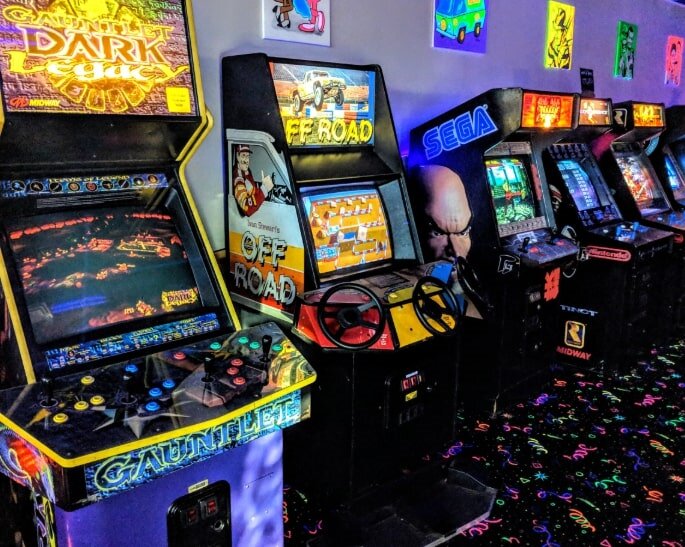An arcade circuit board (PCB) typically refers to a printed circuit board containing electronic components such as circuitry, game chips, and connectors. It is the core component for the operation of arcade games. As the support and connecting carrier for electronic components, it enables the game to function properly through circuit connections, thus being an essential part of the arcade machine (frame and chassis). In the early days of arcades, each game typically had its own dedicated PCB. For example, games like *Space Invaders*, *Pac-Man*, and *Street Fighter II* all had PCBs customized by the game manufacturers, with different structures, chip layouts, and interface standards.
Arcade Machine Components
The function of an arcade machine is similar to that of a modern computer motherboard. Although hardware resources are limited, its architecture is highly representative. It generally includes the following main components:
Central Processing Unit (CPU)
Responsible for game logic, input response, and data calculation.
Early on, classic chips such as the Zilog Z80 and Motorola 68000 were commonly used.
Graphics Processing Unit (GPU/Video Chip): Used to generate game visuals, control sprites, background layers, and scrolling effects.
Sound Processing Chip: Controls music and sound effects playback, such as Yamaha YM series, OKI, CPS audio processing units, etc.
ROM (Read-Only Memory): Stores game programs, image data, and sound effect data. Different games have different ROM contents, thus creating different game PCBs.
RAM (Random Access Memory): Provides temporary data storage during game runtime.
I/O Ports: Connects joysticks, buttons, coin acceptors, displays, speakers, etc.
Power Module: Provides a stable 5V, 12V, or other DC voltage for the entire circuit board.

arcade circuit board
Components of an Arcade Circuit Board
Substrate: The substrate material providing mechanical support, typically a glass fiber reinforced epoxy resin material (such as FR-4).
Conductive Layer: Composed of copper foil, forming wires and pads, responsible for transmitting electrical signals.
In multilayer boards, conductive layers are categorized into signal layers, power layers, and ground layers.
Dielectric layer, also known as the substrate, is used to insulate the conductive layers, ensuring that the layers and circuits do not interfere with each other.
The stacked structure of a multilayer board consists of alternating dielectric layers and copper foil layers.
Solder mask, applied to the surface of the circuit board, is green or other colors used to protect the copper foil traces and prevent short circuits during soldering.
Silkscreen layer contains text and symbols printed on the solder mask, used to identify the location, model, and orientation of components, facilitating assembly and maintenance.
Surface finish is used to protect the copper pads to be soldered, preventing oxidation and improving soldering reliability.
Common finishes include HASL, ENIG, and Immersion Silver.
Although home consoles and PC games have become mainstream, arcade culture remains strong.
Modern arcade circuit boards are no longer limited to traditional 2D pixel games, but are evolving in the following directions:
High-definition display support (HDMI, DisplayPort)
Network communication functions (online multiplayer, online updates)
Embedded operating systems (such as Linux, Windows Embedded)
High-performance multi-core CPU and GPU integrated designs
Furthermore, the rise of the retro gaming market has also driven demand for the restoration and replication of classic arcade PCBs. Many collectors and gaming enthusiasts purchase old PCBs for preservation or modification, giving these classics a new lease on life.

arcade
From single-chip boards decades ago to today's system motherboards with high-speed computing and high-definition output capabilities, the evolution of arcade circuit boards records the history of electronic entertainment technology. It is not just a circuit board, but a cultural memory—carrying the passion, competition, and joy of the arcade era. Today, whether in the collections of retro game enthusiasts or at the heart of modern entertainment devices, arcade circuit boards still shine with unique technological brilliance.